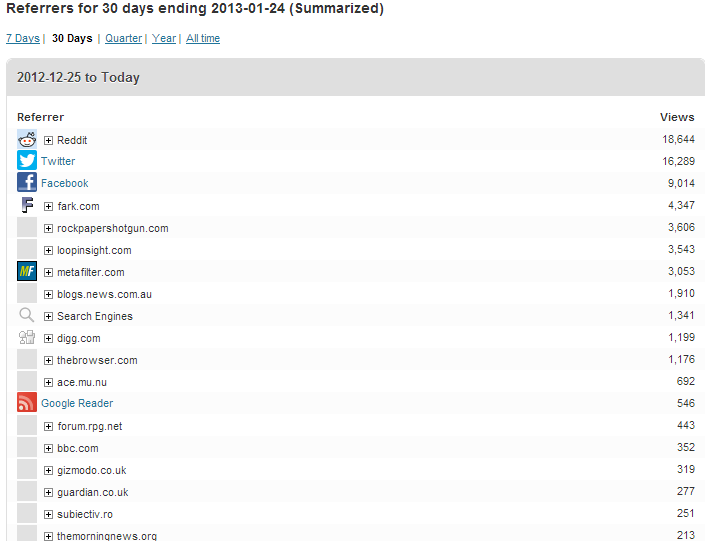 Warren Spector’s latest GI column asks: where is the Roger Ebert of gaming? He bemoans the lack of accessible, consistent writing about games in mainstream media, aimed at broad rather than specialist audiences. The key passages are a call to action:
Warren Spector’s latest GI column asks: where is the Roger Ebert of gaming? He bemoans the lack of accessible, consistent writing about games in mainstream media, aimed at broad rather than specialist audiences. The key passages are a call to action:
I’m not saying reaching an audience that doesn’t know enough to take games seriously will be easy. I’m for sure not finding fault with people currently trying to accomplish this difficult goal. I’m just saying we need to continue working and harder to bring more writers and thinkers into the area between Reviewers and Academia. We can’t be complacent and say, “Aw, what we got is good enough.”
Let’s inundate the bookshelves, magazine sections and the web with work that isn’t above (or below) the heads of readers. Only in that way will we achieve the level of respect I believe we deserve. Only in that way will we create an audience more demanding of the medium, which will inevitably lead to different and, I’d argue, better games.
This kind of treatment – as exemplified by the Times articles mentioned above – would do games a world of good. Establishing games in the public mind as something good and worthy and serious, and not just “fun for kids, but not for me” seems important to me. It’s important to developers, publishers, players and maybe even to – for want of a better word – enemies who might come to a more nuanced understanding of our medium.
Frankly, if games are not up to this sort of critical analysis then maybe they are just a way to provide some thrills and chills or some time away from real world problems, as our critics (in still another sense of the word) contend.
I agree, broadly, with the sentiment of the piece – that there is not enough mainstream game criticism of explanation, rather than of evaluation – but the issue is not that we do not have one or many Roger Eberts. It’s that we don’t have Roger Ebert’s editors. In the English speaking world, we don’t have a mainstream press that commissions these pieces consistently from the many talented critics who are already doing this work. We have a mainstream press, for the most part, that commissions very short reviews with evaluative ratings on only the very biggest, most blockbusting titles, or that syndicates specialist content written for gamer audiences rather than for the general public. We have a mainstream media that doesn’t want to – or can’t – pay excellent writers properly to produce excellent work, or promote it appropriately when it does. (That’s a sweeping generalisation, of course. There are many exceptions and many outlets where this is changing. But there aren’t enough.)
Outside the specialist press, the enthusiast press and the academic press, accessible games criticism is not reaching the audience it deserves because it’s not being widely commissioned or published in mainstream publications. It’s not that there’s no demand from audiences – the proliferation of intelligent and accessible work on Tumblr, on personal blogs, and elsewhere is testament to the voracity of that demand. It’s not that there are no writers capable of such accessibility, insight and excellence; there are dozens.
It is, however, about the business and budgetary crises in mainstream media. It’s about the gradual shift away from gamer-as-identity to gaming-as-mainstream-pastime, as more people play games and fewer think of game-playing as a fundamental element of their personality. It’s about the youth of video games and video game writing alike as creative media, and their dual resistance to external critique. And it’s about the shift in thinking involved in situating video games as culture and entertainment when historically mainstream media has covered them as technology. These are all issues that time will solve, one way or the other.
This month’s Blogs of the Round Table topic over on Critical Distance asks what the future of video game blogging is, and this can serve as my response: the future of video game blogging is mainstream. At the moment – like it or not – the best, most accessible, most interesting games writers are freelancers, working for niche outlets and writing for themselves. The future for video games blogging is a mass audience. And hopefully better pay along with it.
[I can’t make the iframe link list to the other BoRT blogs work here – but you should go here and read the others too.]

